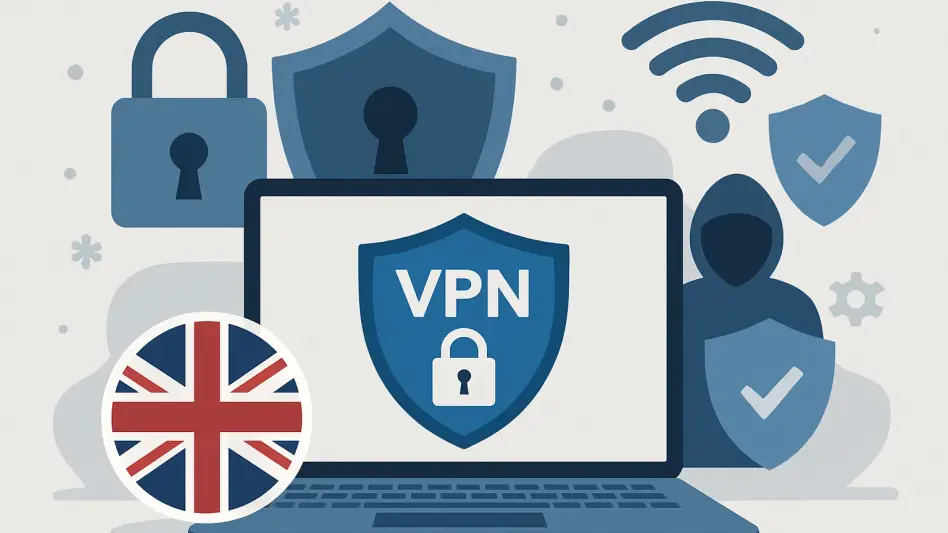In the ever-evolving landscape of digital regulation, the United Kingdom’s Online Safety Act (OSA), enacted over a year ago, has sparked significant debate and behavioral shifts among internet users. Designed to protect individuals, especially children, from harmful online content, the legislation imposes strict measures like mandatory age verification for certain websites and potential scanning of encrypted messages. However, while the goal is to create a safer online environment, recent data suggests that the act may be driving users toward tools and practices that could undermine both their security and the law’s intent. Reports indicate a staggering surge in virtual private network (VPN) usage as individuals seek to bypass restrictions, alongside a worrying uptick in riskier online activities. This complex interplay between regulation and user response raises critical questions about privacy, safety, and the unintended consequences of such sweeping policies in the digital age.
The Surge in VPN Adoption and Circumvention Tactics
The introduction of the Online Safety Act has led to a remarkable increase in VPN usage across the UK as users attempt to navigate around its stringent requirements. Tech research indicates that major VPN providers have reported exponential growth in subscriptions, with some seeing increases of over 1,000% since the law took effect. This spike reflects a clear desire among users to maintain anonymity and access content without facing age-verification barriers or surveillance. Beyond VPNs, search trends reveal a sharp rise in interest for alternative methods of circumvention, such as accessing non-compliant platforms and even exploring underground networks. These behaviors suggest that rather than adhering to regulated spaces, many individuals are prioritizing unrestricted access, often at the expense of their own digital safety. The sheer scale of this shift underscores a growing tension between governmental control and personal freedom in the online realm, highlighting how quickly users adapt to avoid perceived overreach.
Equally concerning is the broader impact of these circumvention tactics on the digital landscape. As users flock to VPNs and unregulated platforms to bypass the act’s restrictions, they often encounter environments that lack the safeguards of compliant websites. Traffic to non-compliant adult sites, for instance, has reportedly doubled or tripled, exposing users to potential scams, malware, and data theft. Furthermore, the increased interest in tools for accessing restricted content has coincided with a rise in searches for counterfeit identification and other illicit services. This trend points to a paradoxical outcome: legislation meant to enhance safety appears to be pushing individuals into riskier corners of the internet. The challenge lies in understanding whether these behaviors are a temporary reaction to new rules or a long-term shift that could reshape how online safety is approached in regulated environments.
Privacy Concerns and Security Risks Under the Act
One of the most pressing issues surrounding the Online Safety Act is the threat it poses to user privacy through its data collection mandates. Age-verification systems, a cornerstone of the legislation, require individuals to submit sensitive personal information, raising fears of data breaches and identity theft. Reports have already highlighted instances where unsecured databases exposed critical documents, leaving users vulnerable to fraud and exploitation. This vulnerability is compounded by a growing market for stolen or fake identification documents, which further amplifies the risk of personal data misuse. Such incidents erode trust in the systems designed to protect users, suggesting that the act’s implementation may inadvertently create more hazards than it mitigates. The balance between enforcing safety measures and safeguarding personal information remains a critical point of contention.
Another significant concern is the act’s provision for scanning encrypted messages, a measure aimed at detecting harmful content but criticized for undermining privacy. Experts argue that client-side scanning effectively weakens end-to-end encryption, opening the door to potential mass surveillance of private communications. This has led to strong opposition from major messaging platforms, which have warned of withdrawing services from the UK if forced to comply. The erosion of encryption not only threatens individual privacy but also sets a precedent for broader governmental oversight of digital interactions. As users become aware of these implications, many are turning to VPNs and other tools to shield their activities, further fueling the cycle of circumvention. This clash between safety objectives and privacy rights illustrates the delicate tightrope policymakers must walk when crafting laws for the digital sphere.
Future Implications and Government Responses
Looking ahead, the UK government’s stance on tools like VPNs and potential further restrictions adds another layer of complexity to the Online Safety Act’s impact. While officials have stated that outright bans on VPNs are not on the table, there are indications of plans to target providers that facilitate bypassing the act’s rules. Suggestions of age checks for VPN access or the adoption of advanced monitoring technologies, similar to those used in more restrictive regimes, have sparked alarm among privacy advocates. Such measures could deepen the erosion of online freedoms and drive even more users toward underground solutions that evade oversight. The prospect of escalating regulations raises questions about how far the government might go to enforce compliance, and whether these actions will ultimately protect or endanger the very users the law aims to safeguard.
Beyond immediate policy adjustments, the long-term implications of the act’s enforcement strategy are worth examining. If stricter controls push users further into unregulated spaces, the risks of exposure to cyber threats, scams, and unsafe content could intensify. The data already shows a clear trend of individuals seeking alternatives to compliant platforms, a movement that may become entrenched if trust in regulated systems continues to wane. The government faces the challenge of adapting its approach to address these unintended consequences without compromising the core goal of online safety. Striking this balance will likely require dialogue with tech companies, privacy experts, and users to ensure that future policies do not exacerbate the very issues they seek to resolve. The evolving nature of digital behavior in response to regulation remains a critical area to monitor.
Balancing Safety and Freedom in Retrospect
Reflecting on the journey since the Online Safety Act was implemented, it has become evident that the push for a safer internet has sparked a wave of unintended consequences. The surge in VPN usage and the shift toward riskier online practices highlight a public pushback against perceived overreach, while privacy risks from data collection and encryption concerns add layers of complexity to the debate. Looking back, the legislation’s rollout revealed a stark divide between protective intent and practical outcomes, as users gravitated toward less secure alternatives. Moving forward, a more nuanced approach seems necessary—one that prioritizes collaboration with tech stakeholders to refine policies. Addressing the root causes of user resistance, such as fears over surveillance, emerges as a vital step. Only through such efforts can the dual goals of safety and personal freedom be reconciled, ensuring that future digital regulations avoid driving individuals into the shadows of the internet.








